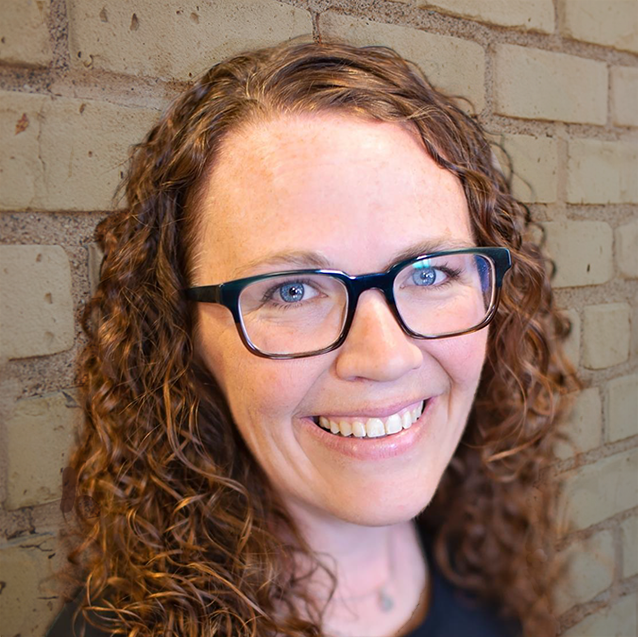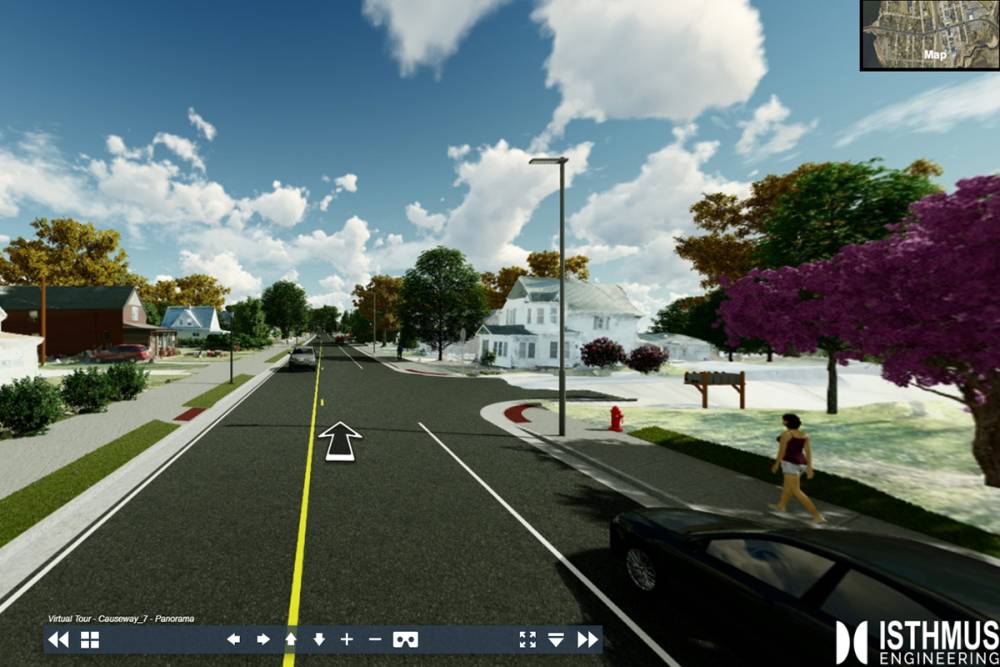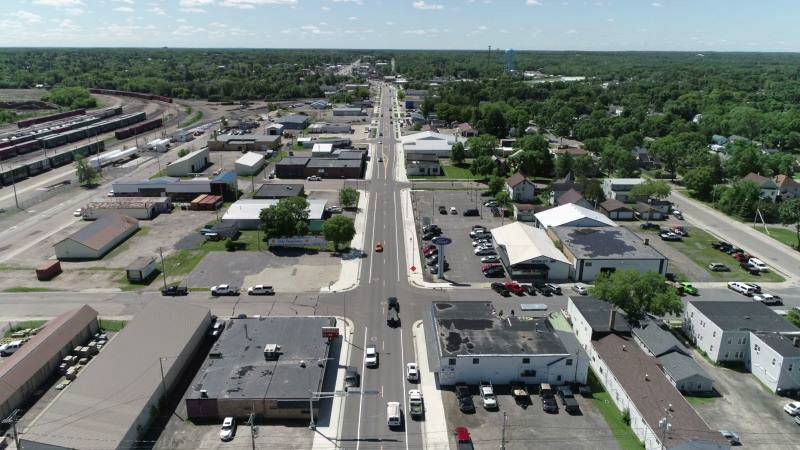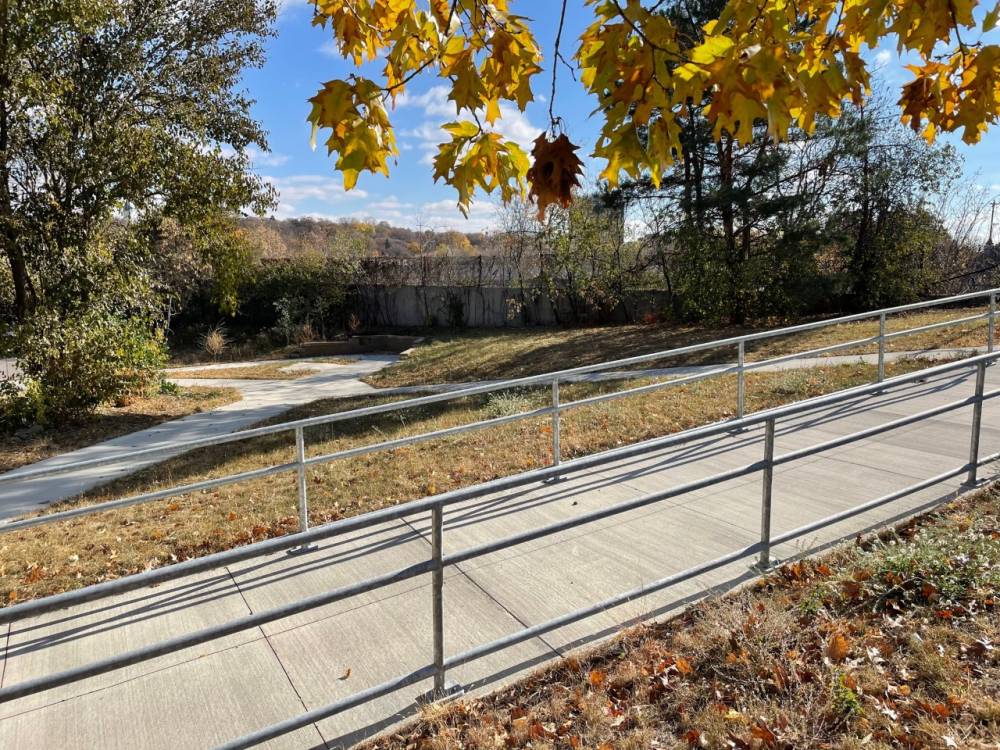ADA Design

ADA Design
Complying with the Americans with Disabilities Act (ADA) is an important and required activity on all transportation projects involving pedestrian movements. In practice, this means that ADA-compliant design is a mandatory component of most transportation engineering projects in Minnesota. Successful ADA-compliant design creates public amenities that are efficient to construct, cost-effective to maintain, and usable by all members of the community.
Isthmus’ thorough understanding of the intent behind ADA as well as solutions such as “outside-in” design has resulted in the development of complex and innovative solutions in restricted locations. Our clients and project partners consistently rely on our experience and understanding in this area, with Isthmus leading ADA design services on 37 projects between 2015 and 2024.
Knowing the requirements and constraints of ADA-compliance on projects, Isthmus is an advocate for assessing and planning ADA design needs upfront in the overall project's preliminary design process. Isthmus begins the ADA planning and coordination process early to accommodate ADA recommendations and guidelines, hydraulic improvements, right-of-way (ROW) constraints, and to gain approval from a variety of agencies. ADA field walks and working sessions provide necessary documentation of ADA recommendations and design development. Through this early coordination, geometric design revisions that may alter construction limits and ROW impacts can be mitigated and disruptions to project schedules and funding can be minimized.
Since 2019, Isthmus staff have directly supported MnDOT Central Office’s (CO) ADA Unit in design and scoping, conducting field walks, preparing site sketches and documentation, developing design recommendations, and providing plan reviews.
ADA Field Walks
Isthmus designers have logged thousands of hours conducting ADA field walks. We work in conjunction with the MnDOT CO ADA Unit on field walks across all districts of the state to develop scoping and design recommendations for upcoming projects. Detailed documentation of inplace conditions and proposed recommended facilities are recorded during field walks for use in design and subsequent plan reviews. Following the field walk, formal recommendations and cost estimates are developed to inform CO ADA’s annual budget allocation.
Isthmus staff assist MnDOT CO in ADA design oversight, coordinating with designers and project managers during the plan review phases of development.
Plan Development
Isthmus staff hold prequalification in all levels of Geometric Layouts and Highway Design. We have a deep bench of engineers who have received formal MnDOT training in ADA design. These individuals provide ADA design methodology training for other Isthmus employees and external partners, as well as ADA-specific plan reviews for MnDOT CO's ADA office. Additionally, Isthmus staff are actively involved in the development of new ADA Standard Plans with MnDOT CO. Isthmus worked closely with the them to develop and update standard plans for curb ramps, sidewalk and driveways, as well as APS Push Button.
Modeling
Applying our knowledge of Bentley Civil Tools to ADA design standards, Isthmus has developed a library of adaptable Civil Cells representing ADA pedestrian ramps. These Civil Cells allow designers to place various standard ramps (perpendicular, parallel, fan, depressed corner, combined directional) to easily determine which ramp will provide the highest quality design. The resulting models adhere to the requirements of ADA and provide visual representation of the Pedestrian Access Route (PAR) and adjacent impacts.
Complete Streets
ADA improvements in urban areas can present a unique design challenge, as project engineers must take into account the interaction of proposed design features with large numbers of homes, businesses, and driveways in close proximity. Our approach to such projects is to think “outside-in,” starting with adjacent building entry points and working into the center of the roadway. Outside-in design allows ADA needs and design input to inform the roadway and geometric design process seamlessly from day one. Isthmus’ unique and tested methods include:
- Use of 2D and 3D Civil Cells
- Toolbox of design methods such as outside-in design
- Understanding of where exceptions are allowed or required by design constraints
Featured Experience
-
Hwy 87 Complete Streets Reconstruction
Frazee, MN
-
Hwy 53 Complete Streets Reconstruction
International Falls, MN
-
2019 & 2020 MnDOT Metro ADA Design Support Contracts
Greater Minneapolis-Saint Paul, MN
Featured Team Members

Michelle Gerrity, PE

Edward Taylor, PE

Jason Tschida, PE




